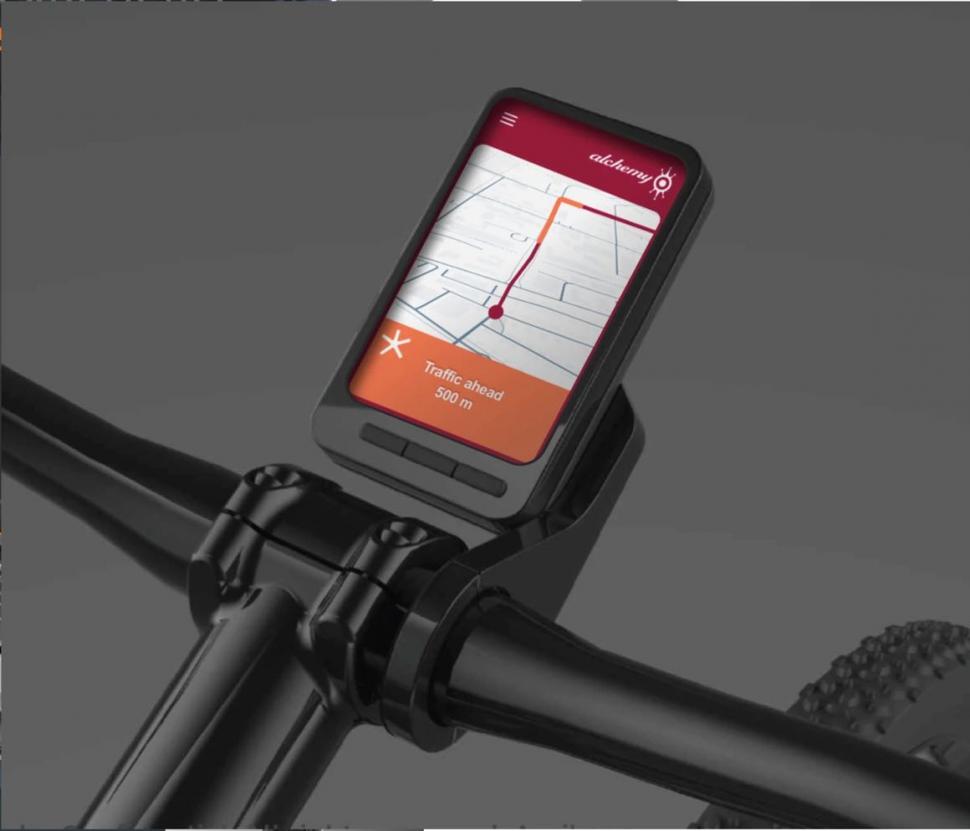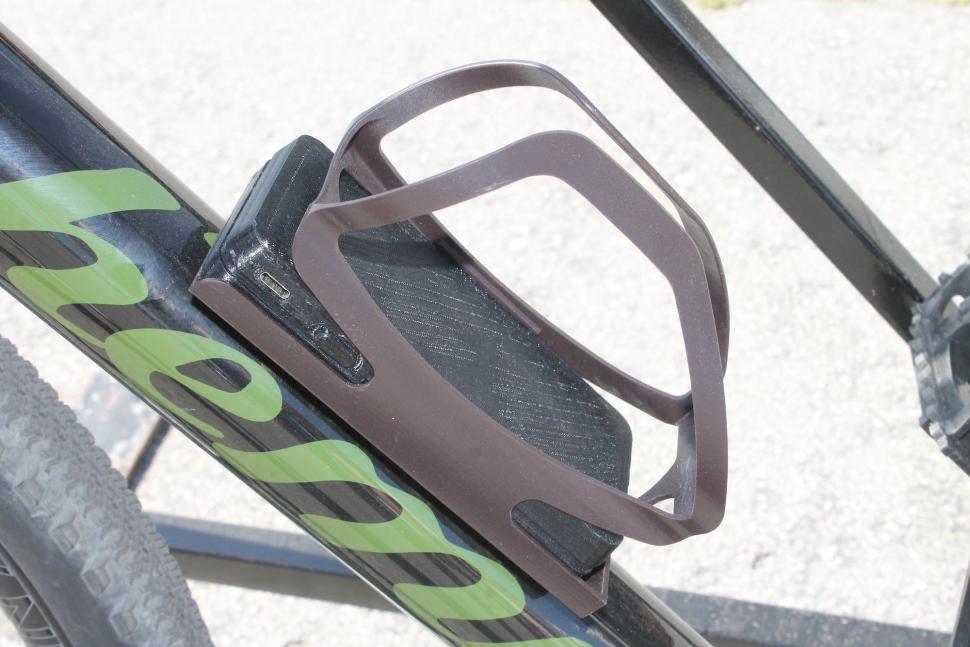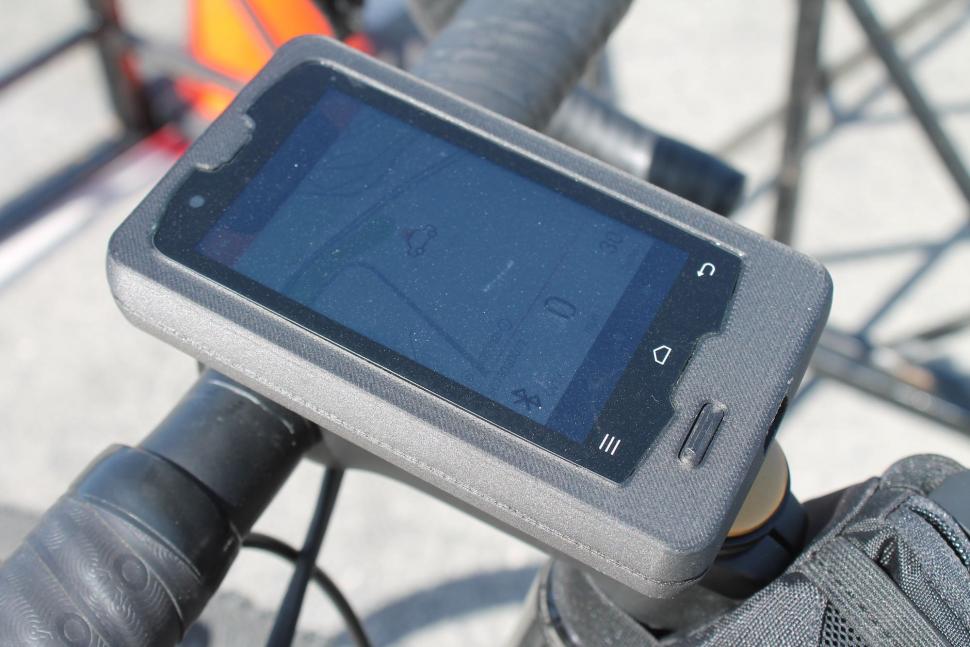- News
- Reviews
- Bikes
- Components
- Bar tape & grips
- Bottom brackets
- Brake & gear cables
- Brake & STI levers
- Brake pads & spares
- Brakes
- Cassettes & freewheels
- Chains
- Chainsets & chainrings
- Derailleurs - front
- Derailleurs - rear
- Forks
- Gear levers & shifters
- Groupsets
- Handlebars & extensions
- Headsets
- Hubs
- Inner tubes
- Pedals
- Quick releases & skewers
- Saddles
- Seatposts
- Stems
- Wheels
- Tyres
- Tubeless valves
- Accessories
- Accessories - misc
- Computer mounts
- Bags
- Bar ends
- Bike bags & cases
- Bottle cages
- Bottles
- Cameras
- Car racks
- Child seats
- Computers
- Glasses
- GPS units
- Helmets
- Lights - front
- Lights - rear
- Lights - sets
- Locks
- Mirrors
- Mudguards
- Racks
- Pumps & CO2 inflators
- Puncture kits
- Reflectives
- Smart watches
- Stands and racks
- Trailers
- Clothing
- Health, fitness and nutrition
- Tools and workshop
- Miscellaneous
- Buyers Guides
- Features
- Forum
- Recommends
- Podcast
TECH NEWS
 2022 Sea Otter Spoke
2022 Sea Otter SpokeA cure for SMIDSY? Spoke technology provides riders and drivers with real-time road safety warnings
A company called Spoke aims to improve road safety by providing riders and drivers with hardware and software that provides real-time data about hazards through the use of wireless vehicle-to-everything (V2X) technology. We've had the chance of a demonstration at the Sea Otter Classic in California.
V2X is communication between a vehicle and anything that it may affect, such as other road users.
Spoke says that it is providing the first connected IoT [Internet of things] ecosystem “to offer secure, direct communication for contextual awareness and alerts between drivers and riders, enhancing safety for all road users”.
The technology is designed to tell riders when vehicles are approaching from behind, for example, as well as to provide alerts when car doors are open or when vehicles are leaving parking spots. The tech can also provide a car driver who is indicating with an alert that a nearby bike rider is likely to pass on the inside, for instance, to avoid turning across them, although there are loads of other situations that could be highlighted.
In other words, Spoke seeks to avoid those common situations that result in “Sorry mate, I didn’t see you” (SMIDSY) incidents.
“This new technology, once implemented, will usher in a new era of connected mobility, providing riders and drivers real-time data about safety hazards on the road. This marriage of technology and mobility will provide the safest on-the-road experience for cyclists and drivers alike.”
The backbone of Spoke is C-V2X – cellular vehicle-to-everything technology. C-V2X is based on existing 5G tech (the fifth-generation tech standard for broadband cellular networks).
Spoke says that is partnering with numerous other companies, including Audi and many major bike manufacturers, to create a new vulnerable road user to everything (VRU2X) ecosystem. It says that VRU2X will provide direct communication between all users 10 times per second. US tech giant Qualcomm is said to be developing chips to support this technology.
Spoke plans “to provide dedicated hardware and software to unlock C-V2X communication to the most vulnerable road users” – including cyclists. This means “vulnerable road user-sized connected computing, display, cameras and lights”. It also plans to provide security features and “ride enriching features”.
“All these features, such as VRU2X traffic notifications, connected route navigation, security services, ride, health and fitness experiences, [will be] delivered via the Spoke App, the OEM's digital application or synched with existing third-party apps, all of which can be accessed over the Spoke bike display or the smartphone.”
A car’s C-V2X system communicates directly with the Spoke system added to a bike; it doesn’t go via satellite so does not require network coverage.
We got the chance to try out the Spoke system at the Sea Otter Classic in Monterey, California, last week.
All the magic happens in a small black box that’s fixed to the bike. Spoke has a system where the box is housed in a compartment on the underside of a bottle cage although other designs are possible. It could even be carried in a cyclist’s pocket.
The box is connected wirelessly to a head unit that sits on the handlebar. Spoke was at pains to point out that the large head unit it devised to demonstrate the system is by no means the version it’ll eventually come to market. Something more comparable to a Garmin Edge or a Wahoo Elemnt computer is much more likely. The safety features will be just part of the package; you’ll also get more traditional bike computer features: speed, distance, power output, and so on.
We rode a bike equipped with the Spoke system and travelled in a car equipped with compatible technology while another rider was on the bike.
One scenario demonstrated that while riding along, an alert appears on the screen of the head unit when a car approaches from behind. The warning could equally easily take the form of an audio alert.
The technology can in theory provide alerts when car and bike are within 300 metres of one another, but that’s likely to be too far in most circumstances, particularly in urban settings. Spoke reckons that the sweet spot for providing warnings is about 5-7 seconds before given situations are likely to occur, or 3-5 seconds if emergency action is required. When the bike is moving away from the vehicle, no alert is given.
Another possibility is for the system to warn a cyclist of hazards around a corner. Say you’re riding towards a crossroads in a built-up area, for instance, and your visibility is obscured by buildings. The technology could warn you that a car is approaching the same crossroads at right angles and is going to arrive at the same time, even though you can’t see that car.
The system can warn a driver that a cyclist is going to emerge from a junction or from between parked cars even though they’re not visible. Similarly, it can be set up to warn an indicating driver not to go ahead with a manoeuvre if a cyclist is approaching on the inside.
As mentioned above, the details of the scenarios for which warnings are provided could be tweaked relatively easily, the key point is that the tech can provide communication between different road users to improve safety, even when those road users aren’t visible to one another.
Spoke says that the necessary technology will be introduced in millions of cars in the next two or three years. Its software and hardware won’t require a subscription; you’ll buy the relevant device and be ready to go. Spoke also describes itself as an open platform, and envisages integration with third-party apps. No release date or prices are yet set.
Mat has been in cycling media since 1996, on titles including BikeRadar, Total Bike, Total Mountain Bike, What Mountain Bike and Mountain Biking UK, and he has been editor of 220 Triathlon and Cycling Plus. Mat has been road.cc technical editor for over a decade, testing bikes, fettling the latest kit, and trying out the most up-to-the-minute clothing. He has won his category in Ironman UK 70.3 and finished on the podium in both marathons he has run. Mat is a Cambridge graduate who did a post-grad in magazine journalism, and he is a winner of the Cycling Media Award for Specialist Online Writer. Now over 50, he's riding road and gravel bikes most days for fun and fitness rather than training for competitions.
Latest Comments
- Born_peddling 7 hours 19 min ago
Muddyfox tour 100's I've wide & flat feet plus there's the optional choice of using cleats with them...
- Prosper0 7 hours 13 min ago
Just doing the Lord's work in case anyone's interested in this product. This Mucoff Pump is a £100 rebrand of an £85 Rockbros rebrand of a £60...
- mdavidford 7 hours 58 min ago
You forgot ignoring half the race to show awkward interviews with the riders' Proud Parents™ instead.
- mdavidford 8 hours 2 min ago
Obviously it means 'springing out of the bunch' on a critical sector. Or maybe it's referring to the time of year.
- David9694 8 hours 49 min ago
Car crashes through garden wall for second time in 18 months https://www.wiltshire999s.co.uk/car-crashes-garden-second-time/
- David9694 8 hours 50 min ago
Woman taken to hospital after flipping car onto roof in Trowbridge...
- A V Lowe 9 hours 33 min ago
Its blindingly obvious from the image that the DKE of the buses include the mirrors which extend to nearly reach the edge of the tarmac pavement on...
- Sredlums 10 hours 6 min ago
It's sad when being very good at your job - any job - isn't enough to earn a decent living. It shouldn't be that way....




Add new comment
29 comments
The purpose of SMIDSY is simply to give the driver an excuse which the police will accept with alacrity. This technology will offer no defence against the real problem which is the BMW/ Audi driver (other nutter marques are available) who has seen you but thinks he's such an ace driver that any contact is the definitely the cyclist's fault and couldn't care less anyway (apart from any damage to the car)
How many of these systems have been announced on this site.
Not quite as many as awful bicycle indicators, but they tend to be considerably cheaper, and may actually give a longer usable life.
Maybe one of them will do everything and be a new Amazon (hopefully with more tax paid) but I would bet this one isn't it, nor the next ten. Only really works if a critical mass of people possess it.
I can see something helping when driverless cars really become a thing, maybe covering our cycling headwear in aluminium foil, perhaps..?
Heavy! Surely some kind of Kapton film would be needed for the pros?
"One scenario demonstrated that while riding along, an alert appears on the screen of the head unit when a car approaches from behind. The warning could equally easily take the form of an audio alert"
Yes, but will we be able to hear it over the noise of the engine approaching us from behind?
As much as this is a good tool to aid road safety we run the risk of it replacing good cycling/driving and us all getting complacent. It should never replace our own awareness of hazards on the road.
What do you mean, you haven't got / can't afford to buy / can't afford to subscribe to our tech? Well, that's not our fault - I'm afraid if you can't be bothered then that's entirely your fault and you deserve what's coming to you...
SMIDMORTALS:
Sorry Mate I Delegated My Own Responsibilities To A Little Shinything
I notice that one of the hazards that this device detects is when drivers are leaving parking spaces. I'm pretty sure that cars are already fitted with a notification device for that scenario - indicators (apologies to BMW owners). It's a shame that use of indicators isn't given a higher priority in the Highway Code - it should be a "must" to indicate when planning to pull out from a space. It really cracks my cranks when drivers don't indicate when pulling out - is it because they haven't seen anyone and so have been taught to not indicate?
An American colleague who spent a few years in the UK took the driving test there. He said his instructor told him off for indicating a turn when there was nobody around. My friend argued that indicating is a good habit, but his instructor told him he should be thinking about it every time, and if it serves no purpose, don't do it.
We had similar discussions when Rendall posted about the Police Car pulling out from a parking spot on the other side of the road without indicating.
I think the camps were:
Always Indicate because you might not see something approaching, however you could fall into the trap of stopping looking because you have now indicated your intent.
Against
Only Indicate when needed because it means you intentionally look around to see if the indication is needed, however the problem there is not looking all around.
Unfortunately it seems that the reality for a lot of drivers is the bad parts from both instructions, which seems to definitely affect German branded cars the most.
I've stated here before that I think that's a fundamentally wrong way to think about driving safely. I appreciate that drivers are expected to think about what they're doing, but my thinking is that indicators are to signal your intention and serve an important safety function in the instance that the driver hasn't seen someone/something.
It's entirely the wrong mode of failure - indicating when there truly is no-one else around causes exactly zero problems, whereas failing to indicate can exacerbate a driving mistake.
It'd be a fun exercise to rate driving instructors and examiners based on how many incidents their students cause.
Having been through the IAM training, is say in principle signalling only when necessary works, but only works with a motivated driver who is engaged with the driving process.
As another example, braking before corners is a well known good thing, but it is extremely hard to counter years of bad driving. I watch other cars and I would say at least 95% of cars are braking in a corner - which also suggests that many are changing geared around corners or while braking too - habits that leads to poorer car control. And the number of people who are aware of the vanishing point technique for assessing appropriate speed for a corner must be vanishingly small, everyone else is just hoping to get it right.
So, to reiterate the point, declaring signalling only when necessary as a general guide isn't helpful if people are not trying to drive properly in the first place - and I think that one of the problems cyclists have with motorists is we are seem as an interruption to someone's carefree journey rather than a normal obstacle to be treated with the same care as any other road hazard.
I think not indicating should be a more serious offence on our roads. How much effort does it take to flick a switch on your vehicle or stick your arm out. Not indicating can cause accidents at worse and delay and frustration at best.
1. So a cyclists has to buy something (probably) expensive because motorists can be bothered to pay attention. If I don't buy and use one presumably I'll be in even more danger because motorists will think - oh there's no V2X ping so I'm good and will therefore just become even less observant.
2. Given motorists frequently cant be bothered to use their eyes, can't imagine why they'd be any more aware of another noise binging at them.
This is a poor solution that skates around the ultimate problem that most accidents aren't caused by some voodoo of difficult visibility, their caused by bad drivers who simply don't pay due care to driving - they'll zone out the pings just like they zone out their eyes "sorry mate i didn't hear the ping" - admittedly SMIDHP isn't quite as catchy!
Not to mention all the lawyers saying the cycist didn't have V2X so its his fault my client didn't know he was there!
Seems to me to be the same the other way round as well. Motorists can buy this to help against bad cyclists. Works just as well one way or the other.
Except that motorists are not in any significant danger from bad cyclists so they are less likely to think that it is necessary. I'm not really sure how this would work to help drivers with bad cyclists as it seems that most of the features revolve around not seeing a danger - how does that help a careful attentive driver?
Cyclists going down the wrong side of vehicles when turning, coming out of side roads without looking, cycling off pavements on to the road without warning, cycling through red lights. etc. etc. All bad cycling that car drivers could do with warning about. OK the cyclist will be the worst off but they are all cyclist fault if there's an accident. Believe it or not most motorists do not want to be involved in a collision with a cyclist.
I believe it - but how much attention do we pay when we're in our cars?
Anyway, you nailed the rest. If I consult my figures...
Shouldn't there be a segment there somewhere for virtue signalling climate extremists?
That's all of 'em - or at least I know one when I see one.
"The technology could warn you that a car is approaching the same crossroads at right angles and is going to arrive at the same time, even though you can’t see that car.
The system can warn a driver that a cyclist is going to emerge from a junction or from between parked cars even though they’re not visible."
Or you could, and this goes for all road users, approach junctions and everyday hazards such as parked vehicles at an appropriate speed and with an awareness of possible developing situations based on proper observation.
It doesn't even need that level of advanced skills, merely drivers (and cyclists) to obey the existing rules of priority. as to this "The system can warn a driver that a cyclist is going to emerge from .. between parked cars" I can imagine the number of drivers likely to to action in this case to be tiny, and align incredibly well with the group of drivers already considering the risks from parked cars and driving accordingly.
Hmmm. How many times on the average bike ride does your signal drop past 5g to No-g?
My phone doesn't do 5G, only 4G.
Looks interesting, such is the way of the world that one can't help but wonder if it'll become the helmets/hi-vis of 2030: "Police are still investigating the fatality but they did reveal that the cyclist was not carrying a V2X transmitter..."
Looks like it'll need to cost £400-500 so just what Joe Bliggs going to fit to his Apollo Phaze for nipping into town or down to JLR to work on the tracks.
At least less well off people can buy a bit of hi-viz, this is putting safety out of reach of the average cycle user while, as you suggest, transferring more responsibility onto the vulnerable road users.
Weren't autonomous vehicles supposed to be able to spot bikes by themselves?
Paraphrasing the rock star body guard in Hitch Hiker's Guide to the Galaxy "I'm paid to protect his body - and not yours". Vehicle safety features are almost exclusively for the occupants.
Exactly - I don't think this is a good idea at all. It's much better for cyclists to trust their own senses and experience. I don't really get the advantage of some device giving you 3 second warning of a car door being opened ahead of you, when surely you can easily see it and avoid it - it's the car doors being opened with no warning at all that are dangerous.